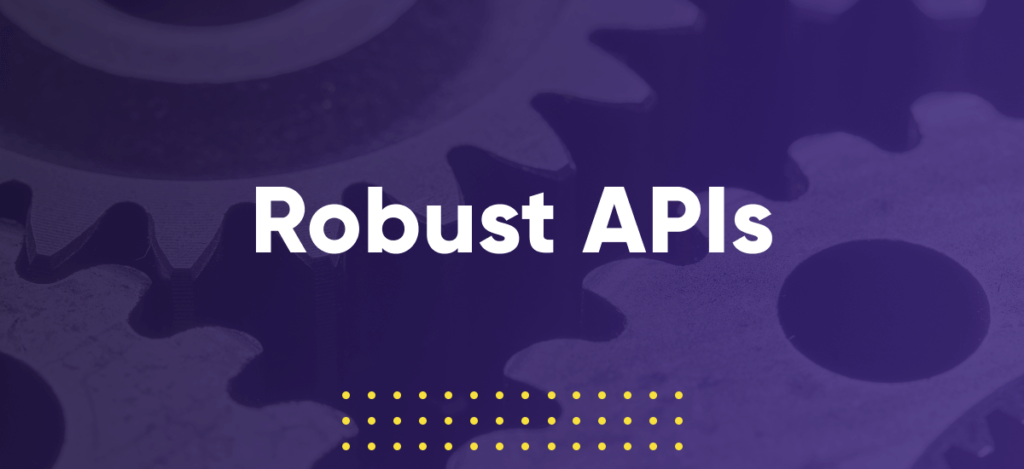Maximizing API Success: The Importance of Wireframing and Modeling

1. Introduction
maximizing api success: the importance of wireframing and modeling
APIs, or Application Programming Interfaces, are the backbone of modern software development, enabling different systems to communicate and work together efficiently. However, the success of an API isn’t just about writing code; it’s about careful planning and design. This is where wireframing and modeling come into play, serving as crucial steps in the API development process. These techniques help developers visualize, plan, and validate their ideas before diving into the more technical aspects of coding, ultimately maximizing the chances of success.
2. What is API Wireframing?

maximizing api success: the importance of wireframing and modeling
Definition of Wireframing
Wireframing is a preliminary visual guide that outlines the structure, functionality, and interactions of an API. Think of it as a blueprint for your API, laying out its key components and how they will interact with each other.
Importance in Software Development
Wireframing is essential because it allows developers and stakeholders to see a basic version of the API’s architecture before any code is written. This early visualization helps identify potential issues and inefficiencies that can be addressed before development begins, saving time and resources.
Key Elements of API Wireframes
An API wireframe typically includes elements like endpoints, methods, data flows, and interactions between different services. These components provide a clear, high-level view of the API’s intended structure and functionality, facilitating discussions and decision-making among team members.
3. Benefits of API Wireframing

maximizing api success: the importance of wireframing and modeling
Visualizing API Structure
Wireframes provide a visual representation of the API, making it easier to understand its architecture and the relationships between different components. This clarity is particularly beneficial when communicating complex ideas to non-technical stakeholders.
Streamlining Development Processes
By defining the structure and interactions early, wireframing helps streamline the development process. Developers can refer to the wireframe throughout the project, ensuring they stay on track and reduce the likelihood of scope creep.
Enhancing Team Collaboration
Wireframing fosters better collaboration among team members. It provides a common reference point that everyone can understand, regardless of their technical background, facilitating more effective communication and alignment of goals.

4. API Modeling: An Overview
maximizing api success: the importance of wireframing and modeling
Definition of API Modeling
API modeling involves creating a detailed representation of the API’s data structures, endpoints, and operations. While wireframes offer a broad overview, models dive deeper into the specifics, providing a more granular view of how the API will function.
Difference Between Wireframing and Modeling
While wireframing focuses on the layout and structure, modeling delves into the detailed workings of the API. Both are essential, with wireframes guiding the initial design and models ensuring that the API is robust, scalable, and aligned with the project’s objectives.
Importance of API Modeling
API modeling is crucial because it helps ensure that the API is not only functional but also efficient, scalable, and secure. A well-modeled API is easier to develop, test, and maintain, ultimately leading to a more successful project.
5. Key Components of API Models

maximizing api success: the importance of wireframing and modeling
Entities and Relationships
In API modeling, entities represent the main objects or data points within the API, while relationships define how these entities interact with each other. Understanding these relationships is key to designing an efficient and cohesive API.
Endpoints and Operations
Endpoints are the specific paths through which data can be accessed or manipulated within an API. Each endpoint supports various operations, such as GET, POST, PUT, or DELETE, which need to be clearly defined in the API model.
Data Flow and Security Considerations
A comprehensive API model also considers data flow—how data moves through the API—and security measures to protect that data. This includes specifying authentication methods, encryption standards, and other security protocols.
6. The Synergy Between Wireframing and Modeling

maximizing api success: the importance of wireframing and modeling
How Wireframing Informs Modeling
Wireframing provides the foundation upon which detailed modeling is built. By starting with a wireframe, developers can ensure that the API model is aligned with the overall structure and goals of the project.
Iterative Development Through Both Approaches
Wireframing and modeling are not one-time tasks; they are iterative processes. As the project evolves, both the wireframe and model can be updated to reflect new insights or changes in requirements.
Examples of Successful Synergy
Many successful API projects use wireframing and modeling in tandem. For example, large tech companies often start with a wireframe to outline their API’s basic structure, then create detailed models to refine and perfect the design.
7. Steps to Create an Effective API Wireframe

maximizing api success: the importance of wireframing and modeling
Identifying API Requirements
The first step in creating an API wireframe is to identify the key requirements of the API. This includes understanding the target audience, the problem the API aims to solve, and the key functionalities it needs to provide.
Drafting Initial Concepts
Once the requirements are clear, developers can begin drafting initial wireframe concepts. These sketches provide a rough outline of the API’s structure and flow, which can be refined through feedback and iteration.
Using Wireframing Tools
There are many tools available that can help streamline the wireframing process. Tools like Balsamiq, Lucidchart, or Figma offer features specifically designed for API wireframing, allowing for quick and easy creation of detailed wireframes.
Best Practices
When wireframing, it’s important to keep the design simple and focused on the core functionalities. Overcomplicating the wireframe can lead to confusion and misalignment later in the project.
8. Steps to Build a Robust API Model

maximizing api success: the importance of wireframing and modeling
Gathering Necessary Data
Before building an API model, it’s essential to gather all the necessary data, including business requirements, user stories, and technical constraints. This information will guide the modeling process and ensure that the final product meets all project goals.
Mapping Out API Endpoints
The next step is to map out the API endpoints, defining how each one will function and what data it will interact with. This step is critical for ensuring that the API is both functional and efficient.
Modeling Data Flows
Data flow modeling involves specifying how data will move through the API, including the sources, destinations, and any transformations it will undergo. This step ensures that the API can handle data effectively and securely.
Validating API Models
Once the model is complete, it should be thoroughly validated to ensure that it meets all technical requirements and business goals. This validation process might involve testing, peer reviews, and other quality assurance measures.
9. Tools and Software for API Wireframing
maximizing api success: the importance of wireframing and modeling
Popular Wireframing Tools
There are several tools popular among developers for API wireframing, including Balsamiq, Lucidchart, and Figma. These tools offer a range of features that make it easy to create, share, and iterate on API wireframes.
How to Choose the Right Tool
Choosing the right wireframing tool depends on the project’s specific needs. Factors to consider include the complexity of the API, the team’s familiarity with the tool, and the need for collaboration features.
Tool Comparison
When comparing tools, consider factors like ease of use, available templates, integration with other software, and cost. Some tools offer free versions with limited features, while others require a subscription for full access.
10. Tools and Software for API Modeling
maximizing api success: the importance of wireframing and modeling
Leading API Modeling Tools
Just like wireframing, API modeling benefits from specialized tools like Swagger, Postman, and API Blueprint. These tools help developers create, visualize, and test API models with greater accuracy and efficiency.
Integration with Development Tools
Many API modeling tools integrate with other development tools, such as version control systems and CI/CD pipelines. This integration helps ensure that the API model stays up-to-date throughout the development process.
Tool Comparison
When choosing an API modeling tool, consider factors like support for different programming languages, the ability to generate API documentation, and compatibility with existing development workflows.
11. Common Challenges in API Wireframing and Modeling
maximizing api success: the importance of wireframing and modeling
Misalignment with Business Goals
One of the most common challenges in API wireframing and modeling is ensuring that the design aligns with the overall business goals. This requires clear communication between developers and stakeholders throughout the project.
Overcomplication of Designs
Another challenge is the tendency to overcomplicate wireframes and models. While detail is important, overly complex designs can be difficult to implement and maintain, leading to delays and increased costs.
Ensuring Scalability and Flexibility
Designing an API that is both scalable and flexible can be challenging, particularly in the early stages of wireframing and modeling. It’s important to consider how the API might evolve over time and build in the necessary flexibility from the start.
12. Case Studies: Successful API Development Using Wireframing and Modeling
maximizing api success: the importance of wireframing and modeling
Case Study 1: A Tech Giant’s Approach
One tech giant used wireframing and modeling to streamline the development of a major API, resulting in a product that was both robust and easy to integrate with. This case study highlights the importance of detailed planning in API success.
Case Study 2: A Start-Up Success Story
A start-up leveraged wireframing and modeling to develop an API that was both powerful and scalable, allowing them to compete with much larger companies. Their success demonstrates how these practices can benefit projects of all sizes.
13. Best Practices for API Wireframing and Modeling
maximizing api success: the importance of wireframing and modeling
Early Involvement of Stakeholders
To ensure alignment with business goals, it’s crucial to involve stakeholders early in the wireframing and modeling process. Their input can help guide the project and prevent costly changes later on.
Regular Iterations and Updates
Wireframing and modeling should be iterative processes, with regular updates based on feedback and testing. This approach helps ensure that the API remains aligned with the project’s goals as it evolves.
Aligning with Business and Technical Goals
Successful API development requires balancing both business and technical goals. Wireframing and modeling can help ensure that the API meets all requirements while remaining feasible to develop and maintain.
14. The Future of API Design: Emerging Trends
maximizing api success: the importance of wireframing and modeling
Increased Automation in Wireframing and Modeling
As technology evolves, more aspects of wireframing and modeling are becoming automated. This automation can help speed up the development process and reduce the likelihood of errors.
AI-Driven API Design Tools
Artificial intelligence is beginning to play a role in API design, with AI-driven tools that can suggest improvements to wireframes and models based on best practices and past projects.
The Role of Microservices in Modern API Architectures
Microservices are becoming increasingly popular in API design, offering greater flexibility and scalability. Wireframing and modeling can help developers design APIs that are well-suited to a microservices architecture.
15. Conclusion
maximizing api success: the importance of wireframing and modeling
Wireframing and modeling are critical steps in maximizing the success of any API development project. These practices provide the structure and guidance needed to create APIs that are functional, efficient, and aligned with both technical and business goals. By investing time in these early stages, developers can avoid common pitfalls, streamline the development process, and deliver APIs that meet or exceed expectations.
16. FAQs maximizing api success: the importance of wireframing and modeling
What is the difference between API wireframing and API modeling?
API wireframing provides a broad overview of the API’s structure, while API modeling dives into the specifics of how it will function. Both are important for different stages of the development process.
Why are wireframing and modeling crucial for API success?
Wireframing and modeling help ensure that the API is well-designed, scalable, and aligned with business goals, reducing the risk of costly errors during development.
How do these practices impact API scalability?
By planning the API’s structure and functionality early, wireframing and modeling help ensure that the API can scale effectively as it grows.
What tools are recommended for beginners?
For beginners, tools like Balsamiq for wireframing and Swagger for modeling are user-friendly and offer a range of features to get started.
How often should API wireframes and models be updated?
Wireframes and models should be updated regularly throughout the development process to reflect any changes in requirements or feedback from stakeholders.
Can small teams benefit from wireframing and modeling?
Absolutely. Even small teams can benefit from wireframing and modeling, as these practices help clarify goals, improve collaboration, and reduce the risk of errors.
Agrawau: Exploring the Rich Cultural Heritage and Historical Significance of This Unique









